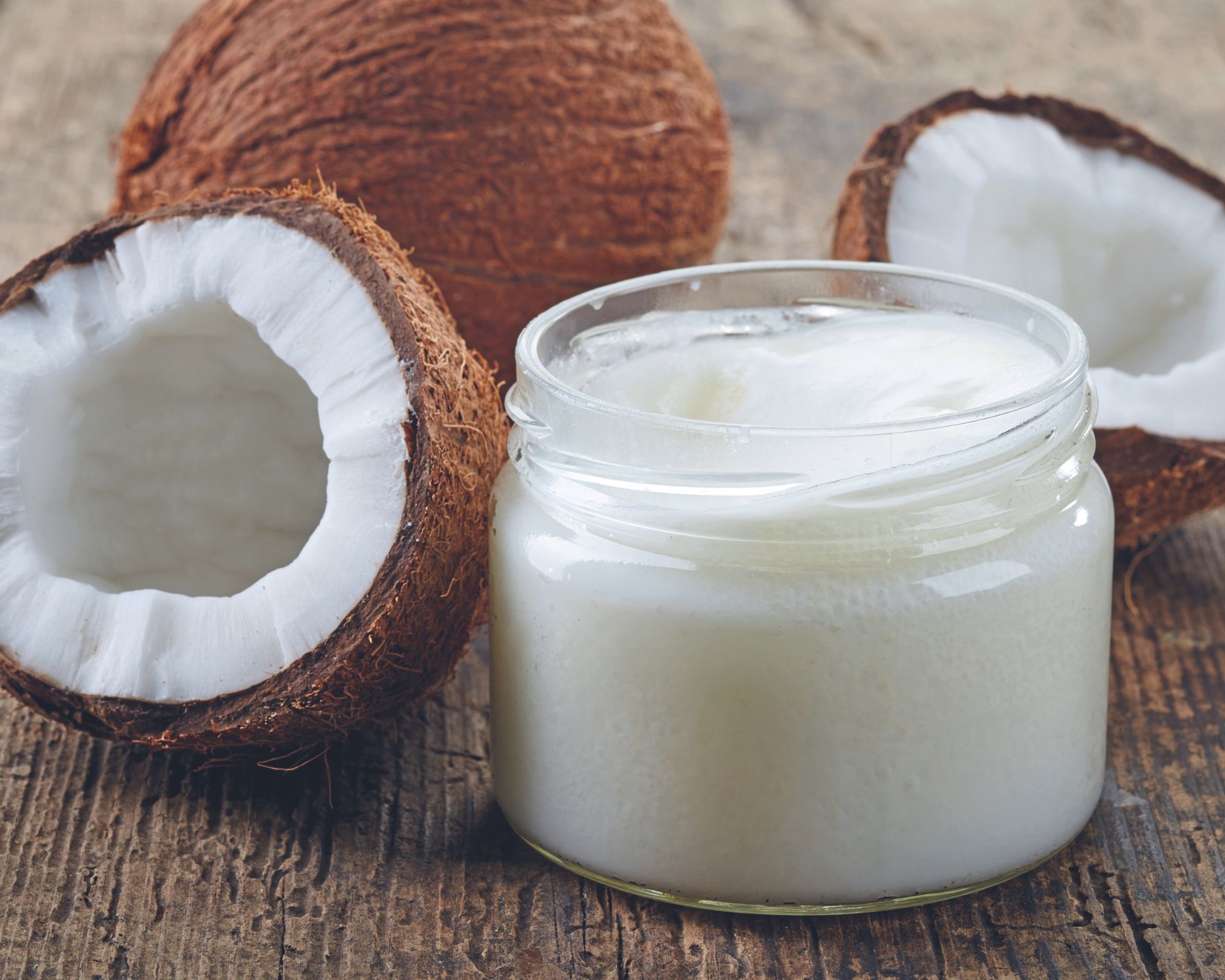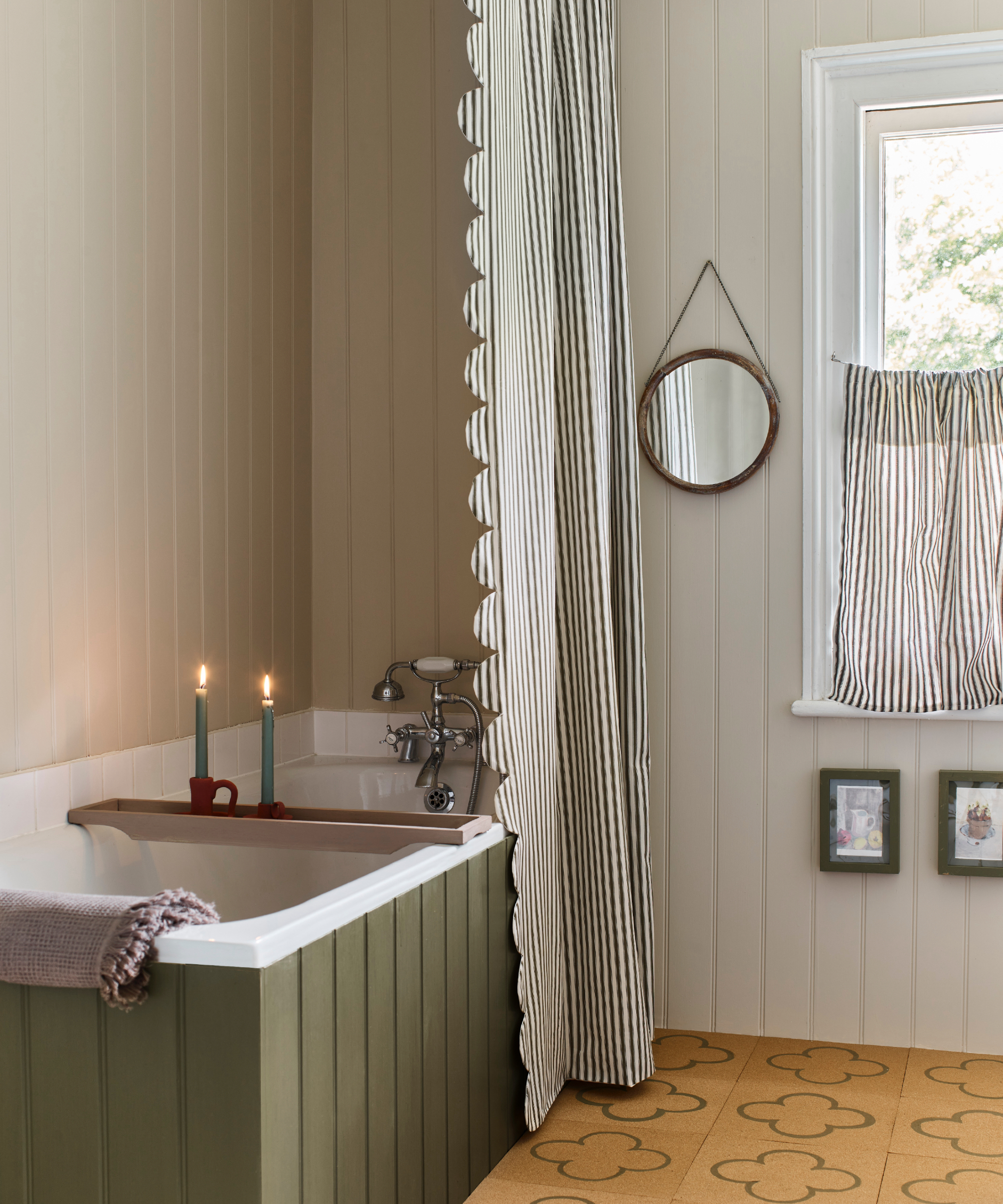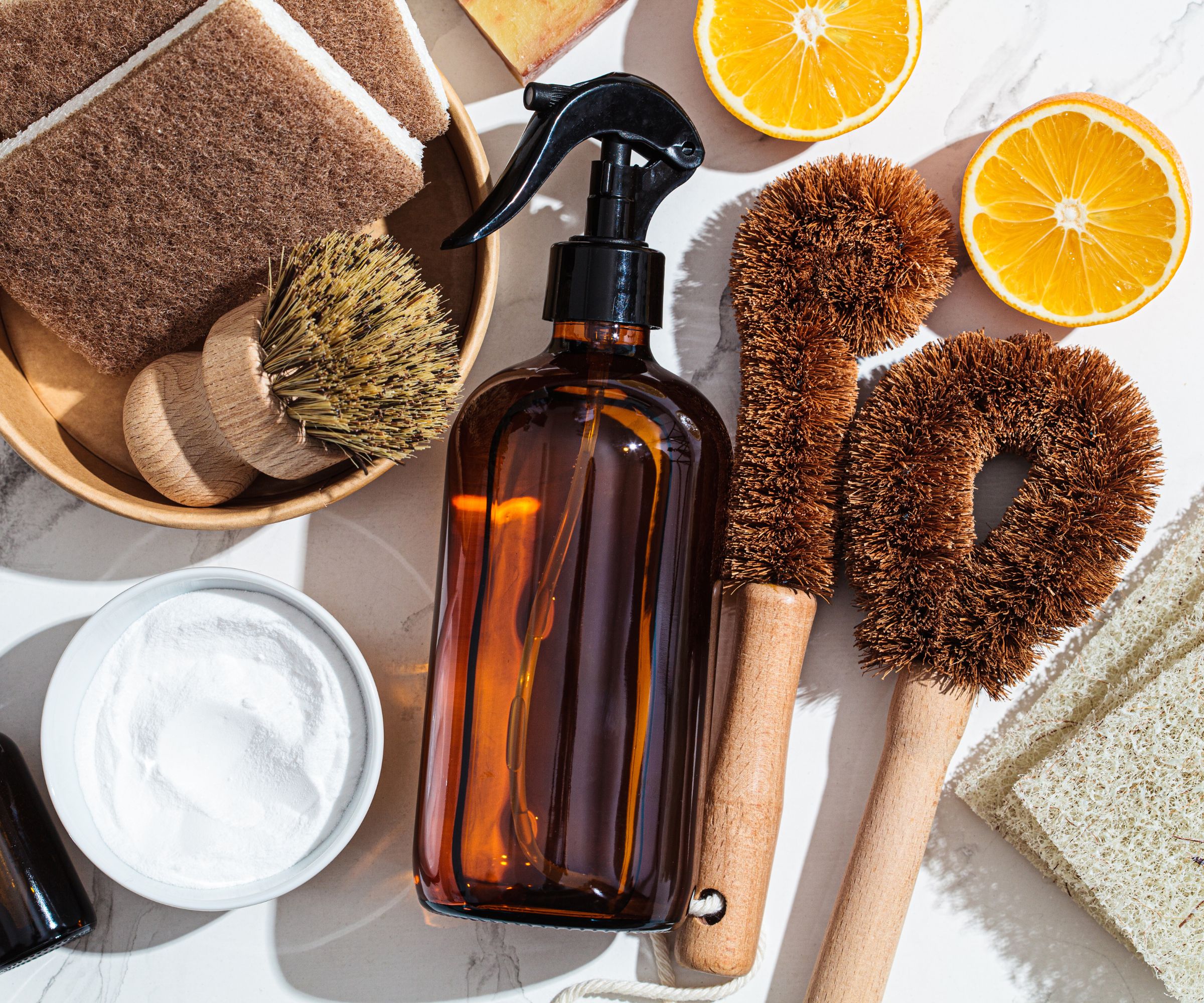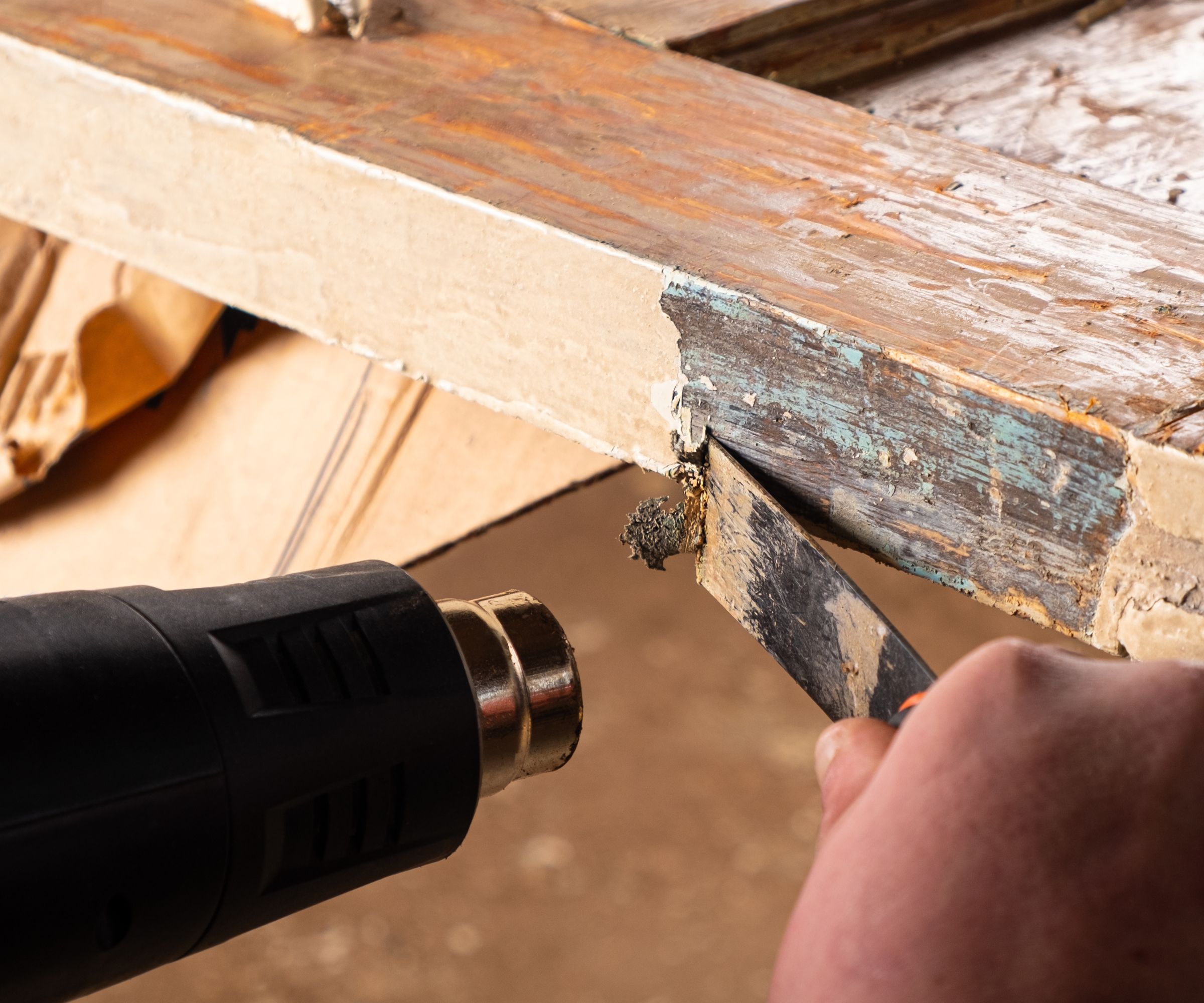
If you’re planning on renovating or updating your home, painting your walls or furniture is a great way to breathe new life into your space. A splash of burnt orange paint or a lick of bright fuchsia can completely transform a room, but before you can get started on the fun stuff, you might have some paint that needs removing first.
Traditional paint removers and strippers are effective but filled with harmful chemicals, luckily, so our painting and decorating pros reveal 12 natural ways to remove paint.
We’ve spoken to paint and decorating experts to learn which natural methods work, so you can update your home without any harm, so you’ll know how to remove paint from metal, get paint off glass and strip paint from wood.
12 ways to remove paint naturally
1. Use a sandblaster rig

This might sound like an extreme piece of kit, but sandblaster rigs, such as the NANPU Sand Blaster available at Amazon, are easy to use - just make sure you wear goggles, or hire a professional if you have a large job to do.
‘One of the best things that will work from a natural, DIY paint remover standpoint is a sandblaster rig,’ says Brandon Walker, construction manager at ASAP Restoration LLC with over 20 years of experience in the paint industry. ‘These can be purchased for around the same entry price as any other power tool, and they will remove nearly any kind of paint from nearly any kind of surface naturally,’ making them a perfect choice for natural paint stripping, particularly getting paint off brick.
You can even get crushed walnut shells to sandblast with if you have grit preferences, and they’re biodegradable and eco-friendly, too.
2. Use olive or coconut oil

The list of uses for olive and coconut oil (such as the Naturally Refined Organic Coconut Oil from Walmart which is easily accessible in a large tub with lid to reseal) is seemingly endless, from health to home, and they’re also great at softening paint for removal.
‘Two effective and mild paint removers are olive oil or coconut oil,’ says Gurleen Kaur, owner of Gurleen Painting and Decorating. ‘Put the oil on the painted area for several hours, after which it is possible to scrape off the dried paint easily, as the presence of the oil loosens it.’
This is a tried and tested method when it comes to removing paint from wood, due to the porosity of the material.
3. Use a soy gel based remover

‘Soy gel paint removers are made of soybean, and work as an aggressive, eco-friendly alternative to harsh chemical strippers,’ says Chris Langley, interior decorator and visionary director of Patio Doors. ‘They break the bond between paint and surface, then easily wipe away.’
These soy-based paint strippers are also biodegradable, low in VOCs, and safe for interior applications, as well as being wonderfully effective.
We like the Blue Bear Soy Gel Paint & Urethane Stripper from Walmart as it can remove multiple layers of paint and other coats from multiple surface types.
4. Make a paste with baking soda

You might know that you can clean with baking soda, but did you know you can use it to strip paint?
‘This is one of the simplest and most effective methods,’ says Kaur. ‘Make a paste by combining water with baking soda and apply onto the painted region. You will need to leave the paste on for some time for it to soften out any existing paint, followed by scrubbing it off using a brush or abrasive pad.’
As baking soda is only slightly abrasive, it works well if you just want to get rid of small paint spots or touch up your furniture.
5. Mix masonry lime with concentrated lye

This one might seem a little more complicated and a little less natural, but don’t be fooled, it’s just as easy and eco-friendly.
‘If you’ve got woodwork hidden under layers of paint, it’s a fantastic old-school method that works wonders,’ says Jeremy Morgan, brand president at Groovy Hues. ‘You mix some masonry lime with concentrated lye, make it into a thick paste, and slather it over the woodwork or walls. After about four hours, you’ll start to see the paint loosening up. But, if you’re patient and let it go for around 12 hours, the paint comes off easily. The only downside is you might need a bit of clean up, like some light sanding.’
While this method is slightly more effort, Morgan assures that the results are ‘totally worth it.’
6. Use vinegar

If you know that you can clean with vinegar, you might be surprised to hear that you can use it to strip paint too.
‘Soak a cloth or sponge in warm white vinegar and apply it gently to the coat of the paint,’ recommends Kaur. ‘After waiting for ten minutes or so, use a brush or knife to scrape it off. Vinegar loosens up paints on wood or metal surfaces,’ so it’s most recommended to use on furniture, not walls.
7. Use heat

This is a super handy trick to know, as the equipment, such as a heat gun or infrared heat lamp, can be purchased once and used time and time again, and can also be used to remove a wallpaper border. We like the bestselling Seekone Heat Gun from Amazon, as it's fast heating and comes with four different nozzles for stripping paint, crafts and shrinking PVC.
‘Infrared heat lamps and heating pads are another option to accelerate the paint stripping process,’ says Brayden Montgomery, home renovation and owner of Vantage Builders, who use sustainable practices and environmentally friendly materials. ‘Apply the heat to soften the paint before using a citrus-based stripper or scrubbing with baking soda. The heat will loosen the paint’s bond from the surface without damaging what’s underneath.
Just be careful using a heat gun without experience: Walker warns that you run the risk of reactivating VOC’s, or volatile organic compounds, within the paint layers.

This versatile heat gun has easy grip on the handles to help avoid accidents when using, is rated highly by over 9000 shoppers, with an average star rating of 4.7/5. You can use this for more than paint stripping, and can loosen rusted nuts, thaw pipes and more making this low budget item worth the spend.
8. Use citrus

‘There are also citrus types of removers that contain d-limonene derived from citrus peels, which are commonly used today and have a lemon-like scent,’ says Kaur. ‘The citrus-based remover (such as the CitriStrip Paint Varnish Stripping Gel from Walmart) should be applied according to the manufacturer’s instructions.’
Alternatively, you can rub fresh citrus peels against any paint, recommends Kaur. ‘Citrus oil helps dissolve paint, thus making its removal easier,’ he says.
9. Use non-caustic strippers

Bart Caldwell, the owner of Caldwell Painting, has been in the painting industry for 13 years, and remembers the days of caustic strippers and the damage they caused, starkly contrasting against natural removers.
He says, ‘For many years, we used aircraft remover as a paint stripper, as we couldn’t find anything better. However, it was so toxic it would burn through latex gloves and burn your skin if it came into contact. But, all the other safer, green products on the market just wouldn’t remove paint, or at least not in a usable manner.
‘We then found a product called SmartStrip (available at Walmart). It’s a non-caustic, low VOC paint stripper that works much better than aircraft remover. We use it to strip front doors, furniture, and interior and exterior trim- honestly anything and everything.’
Caldwell’s ‘little trick’ to make it work even better is to brush it on and then cover with thin plastic, leaving it to sit overnight. ‘The next day every single coat of paint will come off, including the primer,’ he says.
While there are two versions of this wonder product available, one with a red and one with a green label, Caldwell only uses the red if stripping lots of coats on industrial type applications. ‘Probably no need for the DIY’er,’ he says. ‘Just stick to the green label and you will be good to go.’
10. Use cornstarch

Cornstarch can also be used to remove paint from surfaces when mixed with water.
‘Make a paste-like density and smear it over the painted areas,’ says Kaur. ‘Let the solution dry completely before scraping it off again. When drying, cornstarch raises the painted surface making it easier to remove.’
Cornstarch has multiple uses including in cooking for thickening stews and soups, and is available at most stores such as Target or you can order online from Amazon for quick delivery.
11. Use rubbing alcohol

‘I would consider rubbing alcohol to be eco-friendly, and it’s much less harmful than your typical paint stripper, since it’s safe on skin and won’t cause harm if you’re breathing it in, although I would recommend using it in a ventilated space,’ says Matt Balducci, co-owner and CEO of HomeHero Roofing. ‘Combine this with a more manual method of paint removal like a paint scraper, since rubbing alcohol will mostly remove the finish or sealant and loosen the paint up to allow you to remove it.’
12. Use soap and water

Finally, trusty soap and water can be used for natural paint removal.
‘Surprisingly, soap and water also work effectively in removing water-based paints,’ says Kaur. ‘The wet painting can be scrubbed using a brush or cloth soaked in soapy water. This method works best for newly applied or partially dried light painting.’
It’s one of the simplest and most common methods available, but it can work wonders in the right circumstances.
FAQs
What dissolves paint easily?
It’s not natural, but it’s easy and effective: acetone. It’s commonly found in nail polish remover, but can also be used to thin paint and lacquer, or as a paint stripper to clean up after projects.
Just be careful not to breathe any in – we recommend wearing a mask and keeping the area well ventilated. If you’re dissolving paint off furniture, consider taking it outdoors before starting.
Like with most projects, natural paint stripping requires patience. ‘For the best results, go slowly and be careful, especially on drywall which can be easily damaged,’ says Montgomery.
Once you’ve stripped it off, use these paint tricks for ease of application when you come to revamp your walls or furniture.




!["[T]he First and Fifth Amendments Require ICE to Provide Information About the Whereabouts of a Detained Person"](https://images.inkl.com/s3/publisher/cover/212/reason-cover.png?w=600)


